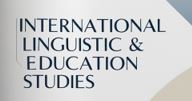Problems of Physical Education Teachers’ Professional Education in China
Анотація
The article deals with the study of the influence of the received pedagogical education on the effectiveness of further teaching work in various pedagogical institutions of the PRC. In the PRC, as a rule, training takes place before employment as a teacher, as well as training directly during work. The purpose of these events is to give future teachers the opportunity to acquire the knowledge and skills necessary for teaching and classroom management, and ultimately to contribute to the development of personal pedagogical skills. Pre-employment education is also called pedagogy, which has been a distinct form of higher education since the founding of New China. The status of a teacher prior to employment is ensured directly by the level of education in an educational institution followed by obtaining the appropriate degree, the motivation in education of the appropriate level of the institution granting the degree, the direction of academic education in a professional direction, qualifications and the desire to continue education at the workplace. The effectiveness of solving such a question was determined using the self-report of the respondents. The results of the study indicate that the academic qualifications of teachers mostly meet the standard, but the number of teachers in certain subjects, including physical education, is still insufficient. The education level of the majority of teachers largely meets the training requirements, but the quantitative indicator still needs to be adjusted. There is a serious shortage of physical education teachers in China's primary and secondary schools, which stands in stark contrast to the government's request to increase courses and classes in physical education and basic health. Therefore, in the future of the People's Republic of China, it is necessary to change the concepts and focus on the training of physical education teachers. The obtained results can be useful for those institutions that are currently working on increasing the number of professional teacher training courses with the appropriate number of training hours.
Ключові слова
Повний текст:
PDF (English)Посилання
Darling-Hammond, L. (2006). Constructing 21st-century teacher education. Journal of Teacher Education, 57(3), 300-314. https://doi.org/10.1177/0022487105285962
Shulman, L. S. (1987). Knowledge and teaching: Foundations of the new reform. Harvard Educational Review, 57(1), 1-22. https://doi.org/10.17763/haer.57.1.j463w79r56455411
Ball, D. L., Thames, M. H., & Phelps, G. (2008). Content knowledge for teaching: What makes it special? Journal of Teacher Education, 59(5), 389-407. https://doi.org/10.1177/0022487108324554
Cochran-Smith, M., & Zeichner, K. M. (Eds.). (2005). Studying teacher education: The report of the AERA Panel on Research and Teacher Education. Lawrence Erlbaum Associates.
Wei, R. C., Darling-Hammond, L., Andree, A., Richardson, N., & Orphanos, S. (2009). Professional learning in the learning profession: A status report on teacher development in the United States and abroad. National Staff Development Council.
Zeichner, K. M. (2010). Rethinking the connections between campus courses and field experiences in college- and university-based teacher education. Journal of Teacher Education, 61(1-2), 89-99. https://doi.org/10.1177/0022487109347671
Gu, Q., & Day, C. (2007). Teachers' resilience: A necessary condition for effectiveness. Teaching and Teacher Education, 23(8), 1302-1316. https://doi.org/10.1016/j.tate.2006.06.006
Kennedy, M. M. (2016). How does professional development improve teaching? Review of Educational Research, 86(4), 945-980. https://doi.org/10.3102/0034654315626800
Darling-Hammond, L., & Bransford, J. (Eds.). (2005). Preparing teachers for a changing world: What teachers should learn and be able to do. Jossey-Bass.
Garet, M. S., Porter, A. C., Desimone, L., Birman, B. F., & Yoon, K. S. (2001). What makes professional development effective? Results from a national sample of teachers. American Educational Research Journal, 38(4), 915-945. https://doi.org/10.3102/00028312038004915
DOI: https://doi.org/10.34142/iles.2024.01.01.05
Посилання
- Поки немає зовнішніх посилань.
 INTERNATIONAL LINGUISTIC & EDUCATION STUDIES
INTERNATIONAL LINGUISTIC & EDUCATION STUDIES